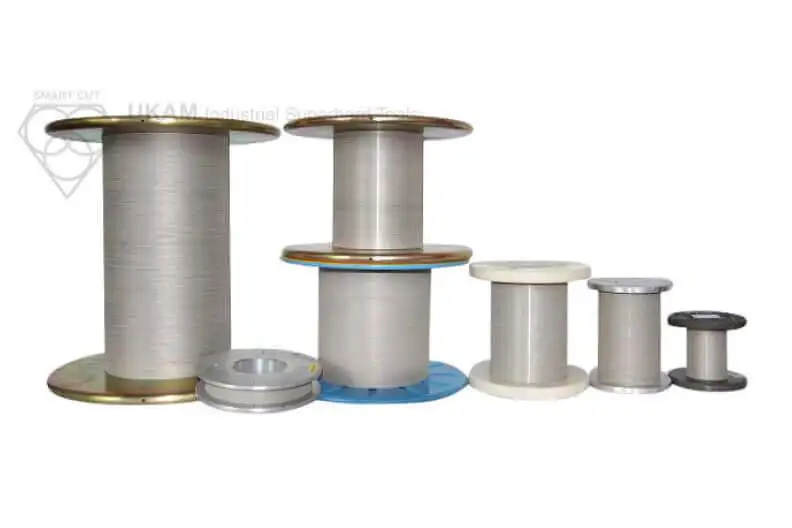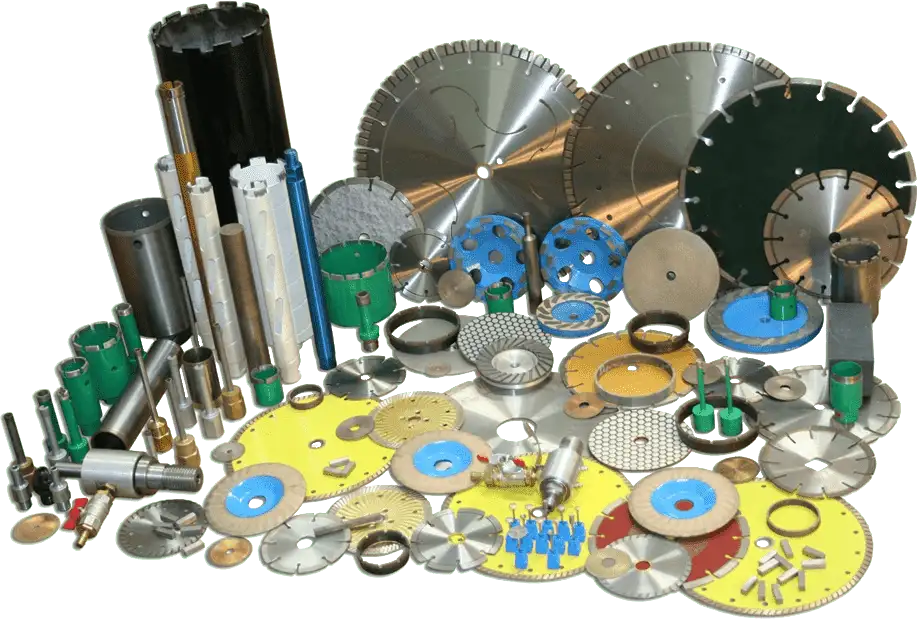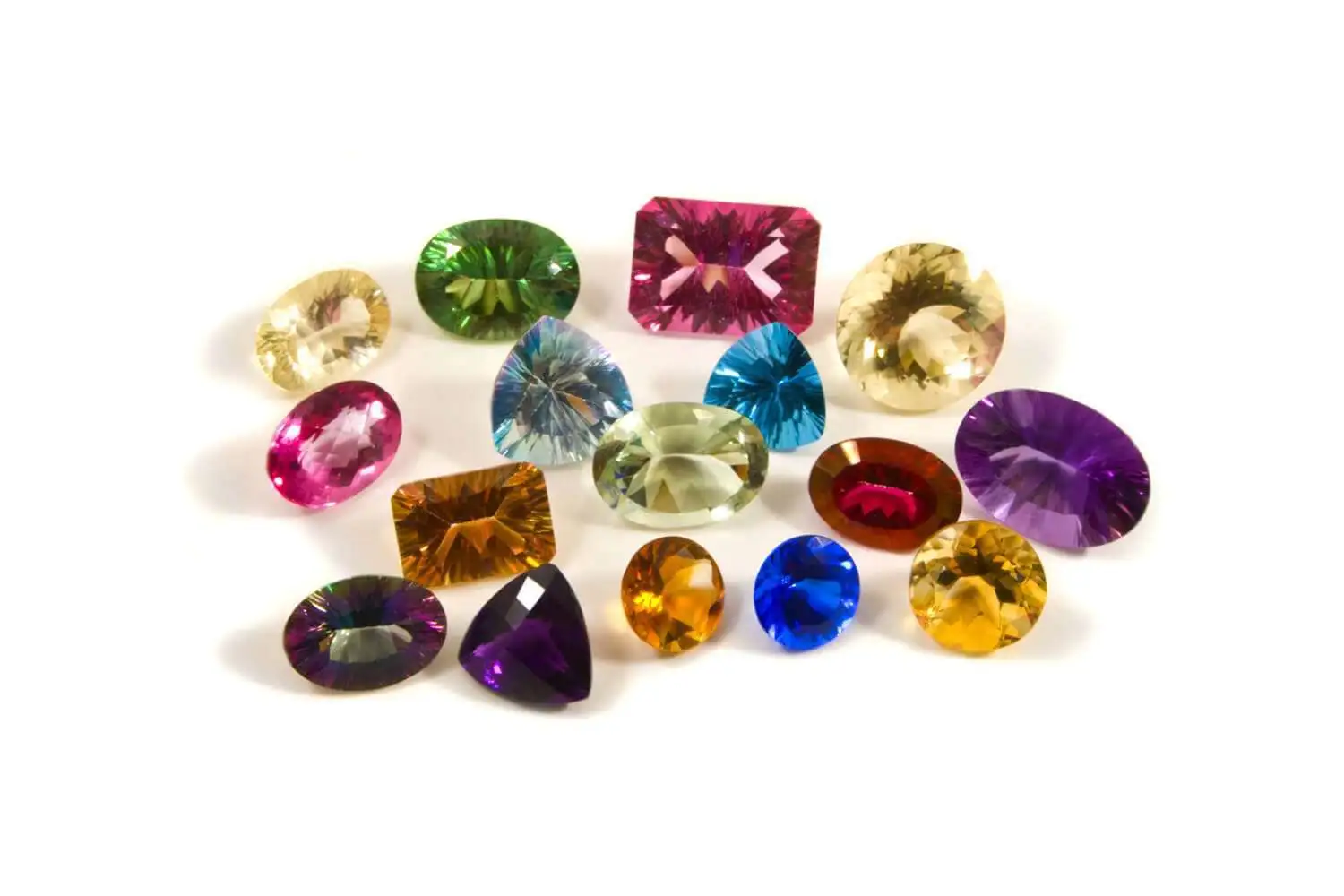-
0 items in quote
No products in the Quote Basket.
SMART CUT 030DSM
METAL BOND (SINTERED) DIAMOND SOLID DRILLS
SMART CUT 030DSM, Metal Bond (Sintered) Diamond Solid Drills have hundreds of layers of diamond impregnated inside the metal matrix. Will last significantly longer than electroplated diamond solid drills. Recommended for drilling Ultra Hard Materials (harder than 8 on mohes scale or 60 on Rockwell Scale. Available in stock from 0.8mm to 6mm diameter.
Sintered (Metal Bond) diamond solid miniature/thin drills – have hundreds of layers of diamond impregnated inside metal matrix. These miniature drills will last significantly longer than electroplated diamond solid drills. Recommended for drilling Ultra Hard Materials (harder than 8 on mohes scale or 60 on Rockwell Scale and clients that need very long life span.
Varying with application and material, an average electroplated diamond sold drill drill will last you 10 to 15 holes. Metal Bond (Sintered) Diamond Solid Drill may last as much as 120+ holes (when used properly).
DESCRIPTION
SPECIFICATIONS
FREQUENTLY ASKED QUESTIONS
INDUSTRIES USED IN
ACCESSORIES
USAGE RECOMMENDATION
DESCRIPTION
Once you compare price and performance per hole, Metal Bond Diamond Solid Drills are an excellent alternative. Specially when drilling ultra hard materials. Although they will cost you more than electroplated diamond drills, metal bonded diamond solid drills will more than pay for themselves in terms of life, and consistent performance. (Not recommended for beginning users. Use electroplated diamond drills for this for this application).

SPECIFICATIONS
All sizes are stated in millimeters and in ( ) in inches.
Bondy Type: Sintered (Metal Bond)
Diamond type: Synthetic
Diamond Size: 180 mesh
Shank Size: 3/32″ (2.35mm)
Overall length: 46mm
Diamond depth/height: 7mm
Recommended Operating Speed: 7,000-10,000
Maximum Operating Speed: 30,000
Used On: High Speed Drill Press, Mounted Hand Piece Drill (such as: Foredom & Dremel), High Speed Air Spindles.
FREQUENTLY ASKED QUESTIONS
The SMART CUT 030DSM drills range in diameter from 0.8mm to 6mm, with a maximum drill depth of 16.5mm for most sizes. They feature hundreds of layers of diamond within a metal matrix, suitable for materials harder than 8 on the Mohs scale.
They are ideal for ultra-hard materials, including advanced ceramics, glass, quartz, natural and synthetic stone, and more.
SMART CUT 030DSM drills have a much longer lifespan, capable of drilling over 120 holes compared to 10-15 for electroplated drills. They are more cost-effective over time due to their durability and consistent performance.
They are not recommended for beginners due to their specialized nature. Beginners should start with electroplated diamond drills.
Proper usage involves selecting the correct drill size for the material, maintaining appropriate drilling speed, using suitable lubrication, and avoiding excessive pressure to prevent premature wear, and proper dressing when needed.
The metal bond technology ensures continuous diamond exposure for effective cutting, making them suitable for hard materials. This technology also ensures even wear and consistent performance.
Yes, they are widely used in various industries, including manufacturing, research and development, and professional contracting, due to their precision and long-term performance.
Yes, their longer lifespan means fewer replacements and less waste, contributing to more sustainable practices.
Always wear appropriate safety gear, ensure the drill is securely fitted, and follow all safety guidelines for high-speed drilling and handling hard materials.
Consider the material hardness and the required hole diameter. Consult the product specifications for the most suitable drill size for your specific application.
Absolutely. These drills are designed for high precision and accuracy, making them suitable for precision engineering and delicate drilling tasks.
Regular cleaning, proper storage, and avoiding overheating during use are key. Using the drills at recommended speeds and with appropriate coolants, and dressing when needed can also prolong their life.
Yes, applying steady, moderate pressure and starting at a lower speed can improve accuracy and reduce the risk of material damage. Gradually increasing speed as needed is also recommended.
While the initial cost is higher, the long lifespan and reduced need for replacements make these drills more cost-effective in the long run, especially for frequent or industrial users.
They are compatible with most standard drilling coolants. The choice of coolant may depend on the specific material being drilled and the desired finish quality.
Discontinue use immediately to avoid damage to the material or equipment. Contact us for advice.
Store them in a dry, cool place, ideally in their original packaging or a protective case to prevent accidental damage and corrosion.
These can be dressed. Trueing can also be possible but usually not financially feasible. Once worn out, they should be replaced.
They can be used on any drilling equipment that will be able to hold the drill shank and operate at the recommended RPM’s range. These are typically used on rotary drilling equipment such as Dremel, foredom, proxon and many others. Also can be used on milling machine or high speed air spindle as long as it operates at recommended rpm’s range based on diameter to the drill/tool.
Performance is optimal on ultra-hard materials. On softer materials, care should be taken to adjust speed and pressure to avoid excessive wear or damage.
They are primarily designed for straight, circular drilling. Drilling at an angle or creating non-circular holes requires specialized techniques and equipment. These can be also used for milling and grinding applications.
Extreme temperatures can affect drilling performance. It’s advisable to use appropriate coolants to maintain temperature stability during drilling.
Yes, they can be used in wet conditions, and using water as a coolant is common. Ensure that the drilling equipment is suitable for such conditions.
It depends on the material’s hardness and the drill size. Generally, harder materials require slower speeds. Consult our guidelines for specific speed recommendations.
While the drills themselves may not have specific safety certifications, they are manufactured to high industry standards. Always ensure that your drilling practices meet local safety regulations.
The higher cost is justified by their superior performance, especially in terms of longevity and precision, making them a cost-effective choice for intensive and professional use.
Yes, they are suitable for use in automated and CNC drilling systems, providing precision and efficiency in high-volume or complex drilling tasks.
They excel in repetitive drilling, maintaining consistency and precision over numerous applications, a key advantage in industrial settings.
Absolutely. They are effective on a wide range of materials, including various composites, offering clean and precise holes.
No specific break-in period is required, but it’s advisable to start with less demanding tasks to get accustomed to the drill’s performance characteristics.
Larger diameters may require slower speeds and more careful handling, especially in harder materials, to maintain precision and prevent drill breakage.
Avoid materials that are too soft or prone to cracking. The drills are optimized for hard materials and may not perform as well on unsuitable substrates.
Yes, but careful technique is necessary to prevent chipping or deviation. It’s best to consult with technical support for specific guidance.
They can handle uneven surfaces, but it’s crucial to stabilize the material and use a guide for precision.
The risk is minimal. The material composition of the drills is designed to prevent contamination during drilling.
Lifespan depends on usage, material, and drilling conditions. It’s generally judged by the drill’s performance decline or visible wear.
Yes, always use protective gear, ensure stable material placement, and follow the drill’s operational guidelines to ensure safety.
Yes, their precision makes them suitable for applications in scientific research and medical device manufacturing.
Too fast can cause overheating and material damage; too slow may lead to inefficient drilling. Optimal speed ensures a clean, precise hole.
Yes, deeper holes require careful speed and pressure adjustment, along with efficient coolant circulation to prevent overheating.
Yes, but with extreme caution and potentially under expert guidance to prevent damage to such sensitive materials.
Drilling at an angle requires skill and precision. The performance is optimal when used straight, but they can handle angled drilling with the right technique.
Yes, the feed rate should match the material hardness and drill size. Consult our guidelines for specific rates.
Very important. The right coolant improves drill life and efficiency, especially in heat-sensitive materials.
They are suitable for micro-drilling, given their range includes small diameters and they offer high precision.
Clean them with appropriate solvents, remove debris, and store in a dry, safe place to prevent corrosion and damage.
Avoid excessive pressure, incorrect speed, and using the wrong drill size for the material, as these can lead to drill damage or suboptimal results.
Deeper drilling may require drills with longer lengths or specific geometries to maintain precision and efficiency.
Reduced efficiency, increased pressure requirement, and poor quality of holes are signs that the drill is dulling.
They can be used on such surfaces with careful setup and handling, although they are primarily designed for flat surfaces.
Follow our guidelines, use appropriate settings and coolants, and apply best practices for drill maintenance and handling.
These drills have multiple diamond layers within a metal matrix, offering enhanced durability and lifespan, especially for ultra-hard materials.
Their construction allows for efficient drilling into materials harder than 8 on the Mohs scale, making them ideal for advanced ceramics, glass, and hard stones.
This technology ensures consistent exposure of new diamond layers, maintaining sharpness and efficiency throughout the drill’s lifespan.
They can last for over 120+ holes, significantly more than standard electroplated diamond drills, depending on usage and material hardness.
Yes, operating speeds vary based on the drill size and material hardness. The manufacturer’s guidelines provide specific speed recommendations.
Yes, they are designed for materials with high hardness levels, such as those above 60 on the Rockwell scale.
Drill diameter selection depends on the hole size required and the material’s properties. Smaller diameters are for precision tasks, while larger ones are for broader applications.
Start with a lower speed and steady pressure to establish the hole, then gradually increase to the optimal speed for the material.
They are frequently used in advanced material manufacturing, gemstone processing, precision engineering, and high-tech research facilities.
Besides standard safety gear, ensure stability and accuracy in setup due to the high precision and efficiency of these drills.
The multiple layers ensure prolonged cutting life as new diamond surfaces are exposed during wear, maintaining drilling efficiency over time.
Their design and materials help dissipate heat effectively, but using appropriate coolants is essential, especially when drilling hard materials.
Yes, they are suitable for optical materials, where precision and minimal material stress are crucial.
Their precision, minimal risk of material damage, and ability to handle hard materials make them ideal for precious and semi-precious stones.
The sintered metal bond ensures a stronger and more durable attachment of the diamonds, leading to a longer lifespan than in electroplated alternatives.
Are there specific guidelines for the drill’s maintenance to preserve its layered diamond structure?
Regular cleaning, avoiding overheating, and using the drill within its recommended parameters help maintain its structure and performance.
Larger diameters generally allow for deeper drilling, but the material’s hardness and drill design also play a role in determining the maximum depth.
While they don’t require a specific break-in period, starting with less demanding tasks can help users get accustomed to the drill’s capabilities.
Their high precision and the need for controlled drilling conditions may be challenging for beginners who are not yet adept at managing such factors.
They perform best in stable temperature environments with proper coolant use, avoiding extremes that could affect both the material being drilled and the drill itself.
This range allows for precise drilling in various applications, from micro-drilling in electronics to larger holes in construction materials.
The metal matrix composition ensures optimal diamond retention and wear rate, crucial for consistent performance and longevity.
Their design accommodates thermal expansion, but correct operating speeds and coolant use are vital to minimize thermal effects.
Yes, their precision and controlled cutting action make them suitable for such materials, reducing the risk of delamination.
Use lower speeds, steady pressure, and appropriate coolants to prevent drill wear and achieve precise results.
Yes, their consistency and durability make them ideal for automated systems, ensuring uniformity in mass production.
High-quality diamonds ensure sharper, more efficient cutting and a longer useful life for the drill.
Visual inspection for bluntness and monitoring drilling efficiency are common methods for assessing wear.
They are designed to minimize vibration and noise, though this also depends on the drilling equipment and material.
Generally, they are not designed to be re-tipped or refurbished due to their complex layered structure.
Ensure the machine is off and completely stopped, follow the tool’s changing protocol, and adjust settings according to the new drill size.
They are compatible with most coolants, but the choice may depend on the specific application, material, and desired finish.
Depth control is crucial; use depth stops or guides to ensure precision, especially in applications where depth consistency is critical.
Select a drill with a size and specification suited for the material’s hardness; harder materials may require drills with more robust diamond impregnation.
Indicators include changes in color, consistency, or effectiveness in cooling and lubricating, as well as an increase in noise or vibration.
Yes, but careful speed and pressure adjustment are necessary to accommodate variations in hardness.
Consider material hardness, drill size, and type, as well as the desired finish quality and drilling depth.
Maintain proper drill use guidelines, including speed, pressure, and coolant use, and regularly check for signs of wear.
Store in a dry, cool place away from direct sunlight and extreme temperatures, preferably in their original packaging.
Excessive humidity can lead to corrosion, and extreme temperatures might affect the metal matrix and diamond bonding, so it’s best to use and store them in controlled environments.
They can handle a wide range of material thicknesses, but ensure the drill length and size are appropriate for the material’s thickness.
Yes, with careful handling and appropriate speed settings, they can minimize the risk of chipping or cracking in sensitive materials.
Their robust construction makes them suitable for abrasive materials, maintaining efficiency and reducing wear.
They are effective on a wide range of glass and ceramic types, including toughened glass and advanced ceramics, due to their precision and strength.
Assess based on the material’s hardness, brittleness, and the drill’s specifications. Consult manufacturer guidelines for specific material compatibility.
Standard safety equipment includes eye protection, gloves, and hearing protection, especially in industrial environments.
They are known for their high accuracy and excellent finish quality, making them suitable for precision applications.
While possible, precision and stability are better achieved with mounted or stationary drilling equipment.
They are particularly favored in industries like electronics, aerospace, jewelry, and research where precision and durability are paramount.
Stop the drill immediately, carefully remove it from the material, and inspect for damage. Review drilling parameters to avoid recurrence.
INDUSTRIES USED IN

Composites

Gem Stones

Sapphire

Repetation

Glass Materials

Lapidary

Stone

Advanced Ceramics

Photonics
ACCESSORIES
Showing 1 – -1 of 13 results Showing all 13 results Showing the single result No results found
Sort by Price low to high
Filters Sort results
Reset Apply
Image | Name | COMPATIBILITY WITH DRILL SERIES | Price | Quantity | Add to cart |
|---|---|---|---|---|---|
Recommended for use in Diamond Tools 150 Grit Size (mesh… | $15.39 | Max: Min: 1 Step: 1 | |||
Recommended for coarser grits found in segment wheels, core drills… | $15.99 | Max: Min: 1 Step: 1 | |||
5/8″-11″ thread. Fits into drill press chuck. Shank adapter threads… | $22.46 | Max: Min: 1 Step: 1 | |||
5/8″-11″ thread. Fits into drill press chuck. Shank adapter threads… | $26.72 | Max: Min: 1 Step: 1 | |||
SMART CUT® General Materials Formula Synthetic Water Soluble Coolant | $34.81 | Max: Min: 1 Step: 1 | |||
Recommended for use in Diamond Tools 150 Grit Size (mesh… | $39.47 | Max: Min: 1 Step: 1 | |||
Recommended for coarser grits found in segment wheels, core drills… | $39.47 | Max: Min: 1 Step: 1 | |||
SMART CUT® General Materials Formula Synthetic Water Soluble Coolant | $99.81 | Max: Min: 1 Step: 1 | |||
105DE, 135DB, 115DM, 125DM, 130DMN, 140DM (up to 1-5/8″ OD) | $154.87 | Max: Min: 1 Step: 1 | |||
105DE, 135DB, 115DM, 125DM, 130DMN, 140DM (up to 1-5/8″ OD) | $154.87 | Max: Min: 1 Step: 1 | |||
105DE, 135DB, 115DM, 125DM, 130DMN, 140DM (up to 1-5/8″ OD) | $235.00 | Max: Min: 1 Step: 1 | |||
SMART CUT® General Materials Formula Synthetic Water Soluble Coolant | $317.41 | Max: Min: 1 Step: 1 | |||
SMART CUT® General Materials Formula Synthetic Water Soluble Coolant | $1,745.00 | Max: Min: 1 Step: 1 |
USAGE RECOMMENDATION
02
Jun
Learn important diamond drill methodology. understand diamond drill specifications and their differences Selecting the right Diamond Drills/Bits for your application is key to obtaining desired diamond drilling results. Using the Right Diamond Drill will…
02
Jun
How to Properly Use Precision Diamond Drills
Step by step guide on how to properly use and care for your diamond drills. Selecting the right diamond drill/diamond drill bit parameters, often involves a trial and error process. Many which can be avoided…
02
Jun
Diamond Drills Guide
Diamond are used across large variety of industries and applications. This guide explores the wide range of diamond drill types, including hollow core drills designed for removing a cylindrical core, non-core formation drills that grind…
02
Jun
Diamond Tools Guide – Selecting Right Drills & Tools for your application
These tools are used for many different industries grinding and shaping material into different forms, expanding exiting inside diameters, grinding, finishing and polishing existing material. Grinding different angles and radius, creating cavities of various forms,…
02
Jun
Optimizing your Diamond Drilling Operation
There are numerous factors that influence the performance of diamond drills. Understanding these factors helps users select the appropriate diamond drill specifications for their specific applications, optimizing drilling operations to achieve maximum efficiency….
02
Jun
Micro Drilling Guide
Share this Article with Friend or Colleague
In order for you to get the most out of your diamond micro drill or carbide / high speed steel micro drill, we strongly urge you to read…
03
May
Diamond Core Drill & Drill Trouble Shooting Guide
Learn the most common problems most people have in using diamond drills. How to resolve them and avoid them in first place https://ukam.com/wp-content/uploads/2024/07/diamond-drill-troublehsooting-guide.mp4
Troubleshooting Drilling Problems
Having issues with your diamond drilling operation? This Illustrated…

Application:
- ceramic, tile & related materials
- advanced ceramics
- glass & quartz
- optical materials
- composites
- natural & synthetic stone
- semi-precious & precious stone
- many other materials
Showing 1 – -1 of 12 results Showing all 12 results Showing the single result No results found
Sort by Price low to high
Filters Sort results
Reset Apply
Image | New Item Number | Old Item No. | Diameter | Maximum Drill Depth | Price | PRICE for 3 PCS | Quantity | Add to cart |
|---|---|---|---|---|---|---|---|---|
UKAMDSD0 | 0.8mm (.0314") | 16.5mm (.650") | $48.97 | $39.97 each | Max: Min: 1 Step: 1 | |||
UKAMDSD1 | 0.9mm (.0354") | 16.5mm (.650") | $48.97 | $39.97 each | Max: Min: 1 Step: 1 | |||
UKAMDSD3 | 1.20mm (.0472") | 16.5mm (.650") | $48.97 | $39.97 each | Max: Min: 1 Step: 1 | |||
UKAMDSD4 | 1.40mm (.0551") | 16.5mm (.650") | $48.97 | $39.97 each | Max: Min: 1 Step: 1 | |||
UKAMDSD5 | 1.60mm (.0629") | 16.5mm (.650") | $48.97 | $39.97 each | Max: Min: 1 Step: 1 | |||
UKAMDSD6 | 1.80mm (.0708") | 16.5mm (.650") | $48.97 | $39.97 each | Max: Min: 1 Step: 1 | |||
UKAMDSD7 | 2.33mm (.0917") | 7.54mm (.296") | $48.97 | $39.97 each | Max: Min: 1 Step: 1 | |||
UKAMDSD7A | 2.7mm (.102") | 9mm (.354") | $48.97 | $39.97 each | Max: Min: 1 Step: 1 | |||
UKAMDSD9 | 3.70mm (.145") | 10.58mm (.416") | $48.97 | $39.97 each | Max: Min: 1 Step: 1 | |||
UKAMDSD9A | 4.70mm (.185") | 10.58mm (.416") | $48.97 | $39.97 each | Max: Min: 1 Step: 1 | |||
UKAMDSD10 | 5.0mm (.197") | 13mm (.512") | $48.97 | $39.97 each | Max: Min: 1 Step: 1 | |||
UKAMDSD11 | 6mm (.236") | 13mm (.512") | $48.97 | $39.97 each | Max: Min: 1 Step: 1 |

Varying with application and material, an average electroplated diamond sold drill drill will last you 10 to 15 holes. Metal Bond (Sintered) Diamond Solid Drill may last as much as 120+ holes (when used properly).
Once you compare price and performance per hole, Metal Bond Diamond Solid Drills are an excellent alternative. Specially when drilling ultra hard materials. Although they will cost you more than electroplated diamond drills, metal bonded diamond solid drills will more than pay for themselves in terms of life, and consistent performance. (Not recommended for beginning users. Use electroplated diamond drills for this for this application).



Diamond Solid Thin Drill Comparison
 |
 |
|
| Bond Composition: | Hundreds Layers of Diamond | One to Three layers of diamond |
| Surface Finish: | Very Goold | Excellent |
| Life Span: | Longest Possible Life | Short Life |
| Chipping Level: | Low | Very Low |
| Application Range: | Very Universal | Cannot Be Used for Some Materials |
| Edge Shape: | Flat Bottom | Flat Bottom |
| Operator Experience Level: | Recommended for More Experienced Users | Easier to Use by Noice Users |
| Drilling Speed: | Little Slower Drilling Action | Usually Faster Drilling Speed |
| Dressing Frequency: | Can Be Dressed Many Dozen Times | Minimum Dressing is Possible |
| Material Hardness Range: | Suited for Ultra Hard To Soft Materials | Suited for Very Hard to Medium Soft Materials |
| Coolant Requirements: | Must Be Used with Coolant | Should Be Used with Coolant |
| Frequency of Dill Change: | Not Frequent | Frequent |
| Cost: | Higher Cost & Better Return on Investment | Lower Cost & Lower Return On Investment |
| Tolerance on Diameter: | 0.02mm | 0.03mm |
| Diamond Grit Size: | Medium | Medium |
| Heat Generation | Medium | Minimum |
About Sintered (Metal Bond)
Sintered (metal bonded) diamond tools have multiple layers of diamonds impregnated inside the metal matrix. Diamonds are furnaces sintered in a matrix made of iron, cobalt, nickel, bronze, copper, tungsten, alloys of these powders or other metals in various combinations. Metal bonded diamond tools are “impregnated” with diamonds. This means that selected diamonds are mixed and sintered with specific metal alloys to achieve the best cutting performance possible on any materials such as sapphire, advanced ceramics, optics, glass, granite, tile and etc. The metal bond surrounding the diamonds must wear away to continuously keep re-exposing the diamonds for the diamond tool to continue cutting. Sintered (metal bonded) diamond tools are recommended for machining hard materials from 45 to 75 on rockwell scale (5 to 9.5 on mohe’s scale of hardness).

RECOMMENDED APPLICATIONS
For Sintered (Metal Bond) Diamond Drills
Varying with application and material, an average electroplated diamond sold drill drill will last you 10 to 15 holes. Metal Bond (Sintered) Diamond Solid Drill may last as much as 120+ holes (when used properly).
Once you compare price and performance per hole, Metal Bond Diamond Solid Drills are an excellent alternative. Specially when drilling ultra hard materials. Although they will cost you more than electroplated diamond drills, metal bonded diamond solid drills will more than pay for themselves in terms of life, and consistent performance.

Metal bonded diamond core drills have diamonds sintered and multiple layers of diamonds impregnated inside the metal matrix. Diamonds are furnaces sintered in a matrix made of iron, cobalt, nickel, bronze, copper, tungsten, alloys of these powders or other metals in various combinations. Metal Bonded Diamond Tools are “impregnated” with diamonds. The compacted materials are then hot pressed or sintered to full density. Heating rate, applied pressure, sintering temperature and holding time, are all controlled according to the matrix composition.
Sintered (metal bonded) diamond tools are recommended for machining hard materials from 45 to 75 on Rockwell Scale (5 to 9.5 on mohs scale of hardness). As a general rule of thumb, Metal Bond (sintered) diamond drills last longer than other diamond drills available.
They can be used in almost all diamond drilling application ranging from very soft & abrasive materials to ultra hard materials. Typical applications include in order from hardness: Composites, Glass, Concrete, Sandstone/flagstone, Natural Stone, Optical Materials, Precious & Semiprecious stone, Advanced/Technical Ceramics, Advanced Materials, & Many Others. Sintered (metal bonded) diamond drills/bits are used & preferred in most Industrial/Manufacturing, R & D, Professional Contractor, & Serious Hobby Enthusiast / Craftsmen users. Sintered (metal bond) diamond core drills/bits are most widely used diamond drills across almost all industries & applications. They wear evenly, and are known for their long life & consistency. Precision & Accurate tolerances can only be obtained with sintered (metal bond) diamond drills.
This means that selected diamonds are mixed and sintered with specific metal alloys to achieve the best cutting performance possible on any materials such as sapphire, advanced ceramics, optics, glass, granite, tile and etc. The metal bond surrounding the diamonds must wear away to continuously keep re-exposing the diamonds for the diamond tool to continue cutting.

Faster Drilling Action
Diamond & CBN tools made utilizing SMART CUT technology are much more aggressive than your conventional tools. They can cut faster, while still leaving behind a smooth finish free of material deformation.
Longer Life
In most cases tools manufactured utilizing SMART CUT technology, will outlast other conventional Sintered (Metal Bond) diamond & CBN drills. SMART CUT diamond & CBN tools are more sturdy than tools manufactured with conventional technologies. They are capable to retain their form and bond configuration all the way through the tools life.


More Consistent Performance
SMART CUT Resin Bond, CBN Blades have hundreds of diamond layers impregnated inside the Resin Bond matrix. Unlike Many Other drill Types, they wear evenly, and are known for their consistency. You will get consistent cutting speed, and overall consistent performance, with minimum amount of dressing even on the hardest to cut materials

Minimize Chipping & Improve Surface Finish
SMART CUT Multi Layered Electroplated Diamond Drills have diamonds oriented and evenly distributed in a bond matrix. Providing faster, freer cutting action with minimum heat generation. This translates in improved surface finish and minimum chipping.
Its what you cant see that makes all the Difference
How SMART CUT ® Bond Works?
Step 1
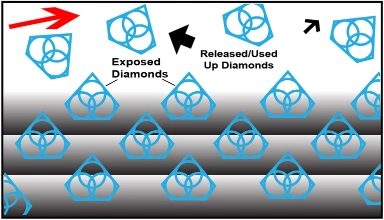
Sharpest And Finest Quality Diamonds
The newly exposed diamonds don’t effect diamonds already working on the material. Unlike many other diamond bonds, diamonds in a SMART CUT® Bond remains sharp and grow sharper with each cut, prolonging product life and consistent performance.
Step 2
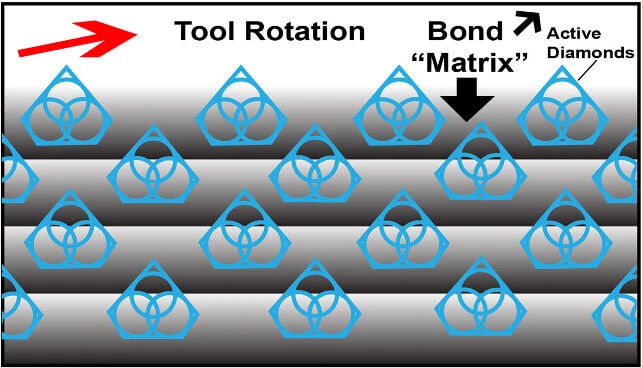
Diamonds or CBN Crystals
Diamonds or CBN Crystals are activated only at the exposed layer. As Bond Matrix layer begin to wear out, diamonds in a new Bond Matrix layer are immediately activated, substituting the already used up diamond layer. The SMART CUT® Diamond Hybrid Bond makes sure every diamond is in the right place and at the right time, working where you need it most.
Step 3
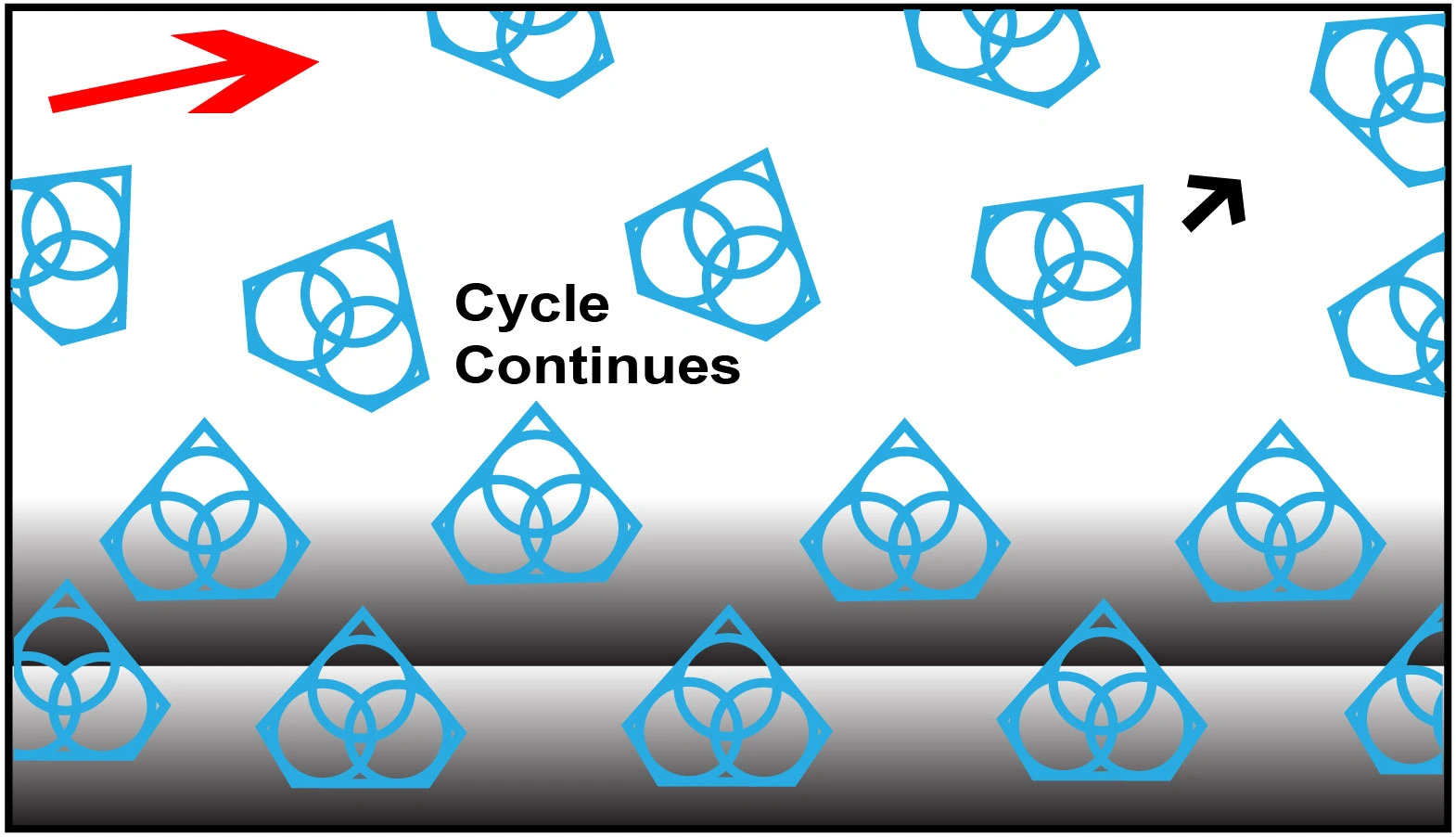
Advanced Formulated Open Diamond Bond Design
This advanced formulated open diamond bond design insures minimal chipping, fast cut, constant speed of cut, minimal cutting noise, and most important of all, consistent performance.
Related Products
SMART CUT® 025DTE
MINATURE TWISTED ELECTROPLATED DIAMOND SOLID DRILLS
SMART CUT® 025DTE Miniature Twisted Electroplated Diamond Solid Drills are high-performance precision tools designed for micro-drilling and reaming applications in a wide variety of materials. These drills are especially well-suited for drilling pearls, where material sensitivity and surface integrity are critical. Their twisted flute design promotes faster material removal and improved chip evacuation, enabling significantly higher drilling speeds compared to standard diamond drills. This advanced geometry also contributes to smoother hole finishes and reduced risk of cracking or chipping, making them ideal for delicate materials such as natural and cultured pearls, beads, ceramics, glass, composites, shells, and even certain metals and hardened materials in niche applications. The electroplated diamond layer is applied directly onto a solid steel shank, exposing sharp diamond particles that enhance cutting efficiency and tool longevity.SMART CUT® 020DHE
MINATURE ELECTROPLATED DIAMOND HOLLO CORE DRILLS
SMART CUT® 020DHE Electroplated miniature hollow core drills are precision-engineered tools designed for drilling small, holes in a wide range of materials. These drills consist of a steel tube with a diamond coating applied to the tip, ensuring superior cutting ability even in the hardest and most brittle materials. Available from stock in diameters ranging from 1 mm to 3.5 mm OD. SMART CUT® 020DHE hollow core plays an important role in enhancing stability, particularly in deep drilling applications. This feature allows for precise control, ensuring the drill remains aligned throughout the process. It also minimizes deflection and bending, common issues when using solid drills for small-diameter, deep holes. As a result, users can achieve more accurate and clean-cut drilling with reduced risks of damage to both the tool and the material.SMART CUT® 015DSE
SMART CUT Series 015DSE Multi Layered Electroplated solid drills are flat cylinder shape with transition angle. These miniature diamond drills have high diamond concentration and give a smother, faster drilling action with minimum heat generation. The multiple layers of diamond coating which provides best diamond adhesion in the bond matrix. This provides longer life span, compared to standard and comparable electroplated miniature drills. Higher level of consistency and better surface finish. Most popular type of diamond drills for drilling small holes for jewelry (stone, glass, & many other materials). Multiple layers of diamond provide longer drilling life, faster & freer drilling. Available from stock from 0.75mm to 2.5mm
Recently Viewed Products
ARE YOU USING RIGHT DIAMOND CORE DRILLS & TOOLS
FOR YOUR APPLICATION?
LET US
HELP YOU
HAVING ISSUES WITH
YOUR CURRENT DIAMOND CORE DRILLS & TOOLS?
Knowledge Center
02
Jun
Select Right Diamond Drill for your Application
Learn important diamond drill methodology. understand diamond drill specifications and their differences Selecting the right Diamond Drills/Bits for your application is key to obtaining desired diamond drilling results. Using the Right Diamond Drill will...
02
Jun
How to Properly Use Precision Diamond Drills
Step by step guide on how to properly use and care for your diamond drills. Selecting the right diamond drill/diamond drill bit parameters, often involves a trial and error process. Many which can be avoided...
02
Jun
Diamond Drills Guide
Diamond are used across large variety of industries and applications. This guide explores the wide range of diamond drill types, including hollow core drills designed for removing a cylindrical core, non-core formation drills that grind...
02
Jun
Diamond Tools Guide – Selecting Right Drills & Tools for your application
These tools are used for many different industries grinding and shaping material into different forms, expanding exiting inside diameters, grinding, finishing and polishing existing material. Grinding different angles and radius, creating cavities of various forms,...
02
Jun
Optimizing your Diamond Drilling Operation
There are numerous factors that influence the performance of diamond drills. Understanding these factors helps users select the appropriate diamond drill specifications for their specific applications, optimizing drilling operations to achieve maximum efficiency....
02
Jun
Micro Drilling Guide
Share this Article with Friend or Colleague
In order for you to get the most out of your diamond micro drill or carbide / high speed steel micro drill, we strongly urge you to read...
02
Jun
Selecting Right Drilling Equipment for your Application. What you features & functionality you should look for?
Share this Article with Friend or Colleague
There are hundreds or even thousands of different drilling equipment options. Selecting the right equipment for a specific application involves carefully considering several variables and attributes of the...
03
May
Diamond Core Drill & Drill Trouble Shooting Guide
Learn the most common problems most people have in using diamond drills. How to resolve them and avoid them in first place https://ukam.com/wp-content/uploads/2024/07/diamond-drill-troublehsooting-guide.mp4
Troubleshooting Drilling Problems
Having issues with your diamond drilling operation? This Illustrated...
09
Sep
Understanding & Calculating Return on Investment for Diamond Core Drills & Other Tools
The term "ROI" (Return On Investment) is widely used across industries, often interpreted differently depending on the context. However, few truly understand what ROI represents and its specific implications, particularly in the context of diamond...
09
Sep
Understanding Tradeoffs – Searching for Perfect Diamond Drill & Tool
Choosing the right diamond drill or tool can significantly impact efficiency, cost, and quality. However, this is not a simple and clear-cut process. Selecting the optimal drill or tool involves navigating a complex landscape of...
19
Sep
Why Use Diamond Drills?
Diamond, known as the hardest material on Earth, enables diamond drills and tools to grind away material at a micro (nano) scale. This extreme hardness allows diamond tools to effectively work on materials with a...











